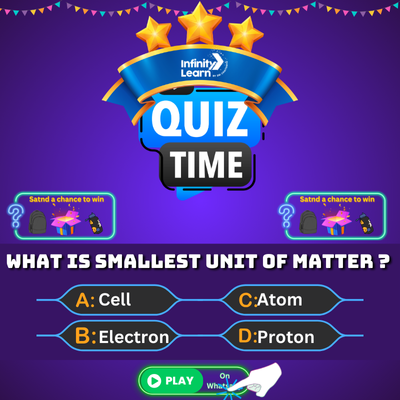Table of Contents
The Full Form of CGI is Computer-Generated Imagery (CGI). CGI refers to the use of computer graphics to create or enhance images in various forms of media, including films, television, video games, printed materials, virtual simulations, and more. These images may be static (still images/photos) or dynamic (animations or video).
CGI can be either two-dimensional (2D) or, more commonly, three-dimensional (3D), and is used to design realistic characters, detailed environments, special effects, and visual simulations.

What Is CGI?
CGI is a subfield of computer graphics focused on producing visual content. It is used widely in: Movies and TV (special effects, characters, environments), Video games (graphics, world-building), Architecture (3D models, walkthroughs), Medicine (anatomical models), Military and aviation training (flight simulators), Live events and weather broadcasts, Education, simulation, and advertising.
When CGI is used for moving images, especially animation, it is called computer animation or CGI animation.
Do Check: AICTE Full Form
CGI History
Vertigo, which featured abstract computer graphics by John Whitney in the opening credits, was the first feature film to use computer-generated imagery (CGI) and to compose a live-action film with CGI. Here is an overview of CGI’s History.
| Year | Milestone |
| 1950s-60s | John Whitney creates abstract computer graphics for art and film. |
| 1958 | Vertigo becomes the first film to use CGI in its opening credits. |
| 1973 | Westworld introduces CGI into live-action storytelling. |
| 1977 | Star Wars and Demon Seed push the boundaries with early visual effects. |
| 1985 | Young Sherlock Holmes showcases the first fully CGI character. |
| 1993 | Jurassic Park combines live-action and computer-generated imagery. |
| 1995 | Toy Story becomes the first feature film to be entirely created using CGI. |
Early CGI was also used in flight simulators for military training. Systems like the Link Digital Image Generator (DIG) helped simulate real-time flight visuals, laying the groundwork for modern CGI capabilities.
Static CGI Landscapes and Architecture
Computer algorithms are also used to create realistic-looking landscapes, like fractal landscapes, in addition to animated images. An extension of the triangular mesh method that relies on the construction of a special case of a de Rham curve, such as midpoint displacement, is a straightforward method for creating fractal surfaces.
Do Check: ADB Full Form
Fractal and Natural Landscapes
CGI isn’t just for animated characters, it’s used to generate landscapes, too. Using fractal algorithms, computers can create realistic terrain, such as mountains, valleys, and coastlines. Examples include:
- Plasma fractals – used for colorful textures
- Fault fractals – simulate cracks and geological faults
Architectural CGI
These visuals help clients and construction teams better understand the final design. Architects now rely heavily on CGI to create:
- 3D building models
- Lighting simulations
- Walk-through animations
- Environmental studies (e.g., sun exposure at different times of the day)
CGI in Medical and Anatomical Modeling
Skeletal animation models created by computers aren’t always anatomically accurate. Nonetheless, groups like the Scientific Computing and Imaging Institute have created computer-based models that accurately depict anatomy.
Anatomical models created by computers can be utilized for both operational and educational objectives. Medical students still utilize a significant collection of artistically created medical images, including those created by Frank H. Netter, such as cardiac images. On the other hand, several online anatomical models are starting to appear.
An X-ray of a single patient is not a CGI (computer-generated image), even if it has been digitalized. Nevertheless, in CT scan applications, a “computer generated image” is automatically produced by fusing several single-slice x-rays to produce a three-dimensional model. In order to produce an internal composite image, magnetic resonance imaging applications also combine several “snapshots”, in this case, magnetic pulses.
Do Check: ACC Full Form
Patient-specific models are built in “computer assisted surgery” in contemporary medical applications. For example, the creation of a comprehensive patient-specific model can be utilized to meticulously plan the procedure for total knee replacement. Usually, several CT scans of the relevant areas of the patient’s anatomy are used to create these three-dimensional models.
CGI in Clothing, Skin, Hair, and Fur
In addition to their use in movies, ads, and other public displays, top fashion design companies now continually use computer-generated images of clothing. Cloth models typically belong to three categories:
- The yarn crossing’s geometric-mechanical structure
- The way continuous elastic sheets work
- cloth’s geometric macroscopic characteristics.
Clothing Simulation
CGI is used by designers for runway presentations and virtual fittings. Digital clothing is hard to animate naturally. It involves simulating:
- Yarn structure
- Elastic sheet behavior
- Overall folds and creases
Skin and Hair Rendering
Pixar’s Monsters Inc. used this technique for Sulley’s fur, duplicating 1,000 base hairs into nearly 3 million strands. Rendering realistic human skin and hair remains challenging. Techniques involve:
- Modeling skin as a 7-dimensional texture function
- Capturing light interactions (reflection, subsurface scattering)
- Generating thousands of hair strands from just a few base strands
Do Check: ABG Full Form
CGI Computer Animation
Computer animation only applies to dynamic images that have a movie-like feel, whereas computer-generated landscape images can be static. However, dynamic images that do not permit user interaction are generally referred to as computer animation, whereas interactive animated environments are referred to as virtual worlds.
In essence, computer animation is the digital equivalent of stop motion animation for 3D models and frame-by-frame animation for 2D drawings. Compared to other more physically based methods, like building miniatures for effects shots or hiring extras for crowd scenes, computer-generated animations are easier to control and enable the creation of images that would be impossible with any other technology.
An image is shown on the computer screen and alternated repeatedly with a new image that is similar to the old one but slightly advanced in the time domain (often at a rate of 24 or 30 frames/second) to give the impression of movement. This is the same method used in movies and television to create the appearance of movement.
CGI in Virtual Worlds
A virtual world is a simulated 3D environment where users interact using avatars. CGI plays a major role in these environments, found in: Online games (e.g., Second Life), Educational simulations and Virtual meeting spaces. Virtual worlds are also used in therapy, training, and entertainment, offering real-time interaction with digitally generated spaces and characters.
CGI in Courtrooms and Live Events
Courtrooms have been using computer-generated imagery since the early 2000s. But according to some experts, it is discriminatory. They aid juries or judges in better visualizing the evidence, hypothesis, or chain of events.However, a 1997 study revealed that people are easily swayed by computer-generated images and are not very good intuitive physicists. Jurors and other legal decision-makers should therefore be made aware that these exhibits are only a representation of one possible course of events.
Do Check: BTS Full Form
Motion Capture and CGI
Motion capture (mocap) is often combined with CGI to produce realistic movements, especially for human characters. Here’s how it works: Actors wear sensors, Movements are digitally recorded and CGI characters are animated using this data. This technique helps overcome CGI’s limitations with human anatomy. It’s also used for de-aging actors in films by blending facial scans with motion capture. For example:
- X-Men: The Last Stand (2006) used CGI to make Patrick Stewart and Ian McKellen appear younger.
- Here (2024) used AI-based scanning to render actors across different ages.
CGI Interactive Simulations
In real-time applications like flight simulators and virtual reality, CGI is essential for rendering changing environments as users interact with them. This system must work fast, producing new visuals in real time as users move or give inputs. The process involves a data pipeline:
- Raw data (e.g., terrain maps, physics)
- Visualization representation (e.g., 3D models)
- Renderable image (sent to the screen)
CGI in Broadcast and live events
The first use of computer-generated imagery in television was for weather visualizations. ColorGraphics Weather Systems was one of the first companies to offer computer systems for creating weather graphics in 1979 with the “LiveLine,” which was based on an Apple II computer. Later models from ColorGraphics used Cromemco computers that had their Dazzler video graphics card installed.
In weathercasting, it has become commonplace to show full motion video of images captured in real time from various cameras and other imaging equipment. These animated visualizations are the first real use of computer-generated imagery (CGI) on television, paired with 3D graphics symbols and mapped to a shared virtual geospatial model.
Do Check: CFO Full Form
Sports telecasting now uses computer-generated imagery. Tracked camera feeds are used to provide see-through and overlay content for improved audience viewing at sports and entertainment venues. One example is the yellow “first down” line that the offensive team must cross in order to get a first down during American football games on television.
Commercial ads are superimposed on the view of the playing field during football games and other athletic events using computer-generated imagery (CGI). Sponsored images are also displayed on some cricket and rugby fields.
In order to enable viewers to compare the current race to the best performance, swimming telecasts frequently place a line across the lanes to show the current record holder’s position as the race progresses. Other examples include tracking hockey pucks, snooker ball trajectories, and annotations of racing car performance.
FAQs on CGI Full Form
What do VFX and CGI stand for?
VFX stands for visual effects, and CGI for computer-generated imagery.
Does CGI have a cost?
The cost of each computer-generated image can range from hundreds to thousands of dollars.
What does computer graphics mean?
A specialized technique or application of computer graphics, computer-generated imagery (CGI) is used to create or enhance images in printed media, video games, art, simulators, and videos.
Is AI used in CGI?
AI is being utilized more and more in CGI to improve a number of processes, from automating tedious tasks to producing lifelike animations.








